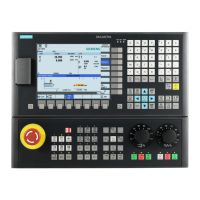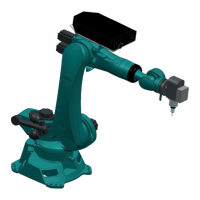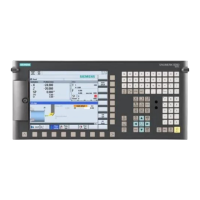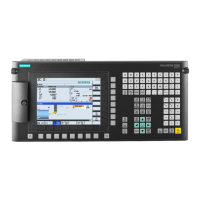Programming and Operating Manual (Turning)
01/2017
287
Block format
Functionality
A block should contain all data required to execute a machining step.
Generally, a block consists of several
and is always completed with the
"
F
" (Linefeed). When
writing a block, this character is automatically generated when pressing the linefeed key on an externally connected
keyboard or pressing the following key on the PPU:
See the following block structure diagram:
If there are several instructions in a block, the following order is recommended:
N... G... X... Z... F... S... T... D... M... H...
Note regarding block numbers
First select the block numbers in steps of 5 or 10. Thus, you can later insert blocks and nevertheless observe the ascending
order of block numbers.
Blocks of a program, which are to be executed not with each program run, can be
by a slash
in front of the block
number.
The block skip itself is activated via
(program control: "SKP") or by the programmable controller (signal). A section
can be skipped by several blocks in succession using "
".
If a block must be skipped during program execution, all program blocks marked with "
" are not executed. All instructions
contained in the blocks concerned will not be considered. The program is continued with the next block without marking.
The instructions in the blocks of a program can be explained using comments (remarks). A comment always starts with a
semicolon " ; " and ends with end-of-block.
Comments are displayed together with the contents of the remaining block in the current block display.
Messages are programmed in a separate block. A message is displayed in a special field and remains active until a block
with a new message is executed or until the end of the program is reached. Up to
characters can be displayed in
message texts.
A message without message text cancels a previous message.
MSG ("THIS IS THE MESSAGE TEXT")

